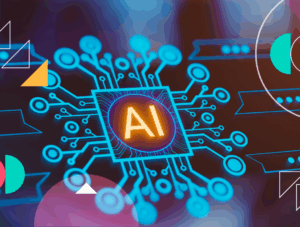The evolution of the smart home has reached a pivotal inflection point. What began as a quest for convenience—automating lights, adjusting thermostats with a voice command, and preheating ovens from a smartphone—is now blossoming into a critical component of our global energy infrastructure. As our electricity grids face unprecedented strain from rising power demand, extreme weather events, and the intermittent nature of renewable energy sources, a silent revolution is taking place inside our homes. Everyday smart appliances are being recruited as active, intelligent participants in maintaining grid stability. This transformation is powered by the concept of the Virtual Power Plant (VPP), a sophisticated system that turns millions of connected devices into a single, coordinated energy asset. This development is not just a niche update in Smart Appliances News; it represents a fundamental shift in how we produce, consume, and think about energy, placing AI-driven homes at the center of a cleaner, more resilient future.
The Convergence of Smart Homes and Smart Grids: Understanding Virtual Power Plants
The idea of a power plant typically conjures images of massive, centralized facilities with smokestacks or sprawling fields of solar panels. A Virtual Power Plant upends this notion entirely. It’s a decentralized network, a cloud-based aggregation of disparate energy resources, orchestrated by intelligent software to act as a single, cohesive power unit. This shift is a leading topic in Smart City / Infrastructure AI Gadgets News, as it redefines urban energy management.
What is a Virtual Power Plant?
A Virtual Power Plant (VPP) is a system that integrates multiple Distributed Energy Resources (DERs) to provide reliable power and grid-balancing services. These DERs are not located in one place but are spread across homes, businesses, and communities. Historically, DERs primarily meant rooftop solar panels and home battery storage systems. However, the modern VPP has expanded its definition to include a far more ubiquitous asset: controllable loads. This category includes electric vehicle (EV) chargers, a major focus of Autonomous Vehicles News, and, most importantly, the growing army of smart appliances in our homes. Through sophisticated AI Sensors & IoT News, we’re seeing devices from refrigerators to water heaters become active grid participants.
The Role of Smart Appliances as Grid Assets
The primary function of smart appliances within a VPP is to facilitate “demand response.” Instead of the traditional grid management method of firing up expensive and often polluting “peaker” plants to meet high demand (a supply-side solution), demand response focuses on temporarily reducing electricity consumption (a demand-side solution). The collective impact of thousands of small, coordinated adjustments can be massive, equivalent to a conventional power plant’s output.
Consider these real-world scenarios:
- Smart Thermostats: During a summer heatwave when the grid is strained, a VPP can signal thousands of smart thermostats to increase the set temperature by one or two degrees for a short period. Most residents won’t even notice the change, but the collective reduction in air conditioner load is immense.
- Electric Water Heaters: These are essentially thermal batteries. A VPP can pre-heat water during off-peak hours when energy is cheap and abundant (e.g., midday when solar generation is high) and then prevent it from running during peak evening hours, without any interruption to the hot water supply for the user.
- Other Appliances: Smart dishwashers, washing machines, and even the charging cycles of devices featured in Robotics Vacuum News can be scheduled to run during off-peak hours, shifting their energy load away from critical periods.
Why Now? The Driving Forces
Several factors are accelerating the adoption of VPPs that leverage smart appliances. Rising energy costs are making consumers more receptive to programs that offer bill credits. The increasing frequency of grid emergencies caused by climate change has forced utilities to seek more flexible and resilient solutions. Finally, the technology has matured. The proliferation of IoT devices, advancements in AI, and the development of interoperability standards have made orchestrating millions of devices a practical reality, a constant theme in Smart Home AI News.

The Technology Under the Hood: How AI Orchestrates the Energy Symphony
The magic of a VPP lies in its ability to seamlessly and intelligently coordinate a vast, heterogeneous network of devices. This requires a sophisticated technological stack, blending robust communication protocols with powerful predictive AI, making it a hot topic for those following AI for Energy / Utilities Gadgets News.
Communication Protocols and Interoperability
For a VPP to function, devices from countless different manufacturers must be able to communicate with the central VPP platform and with each other. This is a significant challenge that the industry is addressing through standardization. Protocols like OpenADR (Open Automated Demand Response) provide a common language for utilities to send demand response signals. At the device level, standards like Wi-Fi, Zigbee, Z-Wave, and the emerging Matter protocol are crucial for ensuring that a smart thermostat from one brand can operate within the same ecosystem as a smart plug from another. Ensuring the integrity of these communications is paramount, bringing developments from AI Security Gadgets News to the forefront to prevent malicious actors from disrupting the grid.
The AI Brain: Predictive Analytics and Real-Time Optimization
The core of any VPP is its AI and machine learning platform. This central “brain” performs several critical tasks:
- Forecasting: It ingests massive amounts of data—weather forecasts, historical energy consumption patterns, wholesale energy prices, and real-time grid conditions—to predict periods of high demand or low supply.
- Personalization: The AI learns the unique energy habits of each participating household. It knows when you typically do laundry, what temperature you prefer, and when you’re likely away from home. This allows it to make adjustments that have the least possible impact on comfort and convenience. Developments in AI Monitoring Devices and even AI-enabled Cameras & Vision News (for presence detection) can feed this system more accurate data.
- Optimization and Dispatch: In real-time, the AI calculates the most efficient and cost-effective way to meet a grid need. It might decide to draw a small amount of power from thousands of home batteries, slightly dim lights connected to systems from AI Lighting Gadgets News, and delay the defrost cycle of ten thousand refrigerators simultaneously. This orchestration happens in milliseconds.
From Cloud to Edge: The Hardware Involved
While the AI brain often resides in the cloud, an increasing amount of intelligence is being pushed to the edge. This is a key trend in AI Edge Devices News. Smart home hubs, modern routers, or even the appliances themselves can contain processors capable of making simple, localized decisions. For example, an edge device could decide to delay a charging cycle based on a signal from the utility without needing constant back-and-forth communication with the cloud, increasing speed and resilience. The hardware extends from the AI Kitchen Gadgets News you see in stores to the smart meters installed by utilities, all forming a cohesive network of AI Sensors & IoT.
Broader Implications: A Paradigm Shift for Utilities and Consumers
The rise of appliance-centric VPPs is more than a technological curiosity; it represents a fundamental restructuring of the relationship between energy providers and consumers, with wide-ranging benefits and a new set of challenges.
For the Utility and the Grid

For energy utilities, VPPs are a game-changer. They offer a flexible, scalable, and rapidly deployable alternative to building traditional power plants, which are capital-intensive and slow to construct. VPPs can be “dispatched” in seconds or minutes, whereas a gas peaker plant can take much longer to ramp up. This speed is crucial for stabilizing a grid that is increasingly reliant on variable renewables like wind and solar. When a cloud bank covers a large solar farm, a VPP can instantly reduce load across a city to compensate for the drop in generation, ensuring a stable power supply for everyone. This capability is a cornerstone of modern grid management and a central focus of AI Research / Prototypes News in the energy sector.
For the Consumer
The most compelling proposition for consumers is financial. Utilities and VPP operators offer direct monetary incentives, such as annual cash payments, monthly bill credits, or gift cards, in exchange for enrolling their devices. This transforms a standard appliance purchase into an investment that can generate a return. Beyond money, participation gives consumers a tangible way to contribute to a cleaner environment. It empowers them to be part of the solution to climate change, directly aiding the integration of renewable energy. The control interfaces, often managed via apps discussed in AI Phone & Mobile Devices News, also provide unprecedented visibility into household energy consumption, promoting more efficient habits.
Challenges and Pitfalls to Overcome
Despite the immense potential, significant hurdles remain. Data privacy is a primary concern. Consumers need clear assurances about who owns their energy usage data and how it is being used and protected. The “Big Brother” fear of a utility having control over one’s home appliances is a major psychological barrier that requires transparent communication and user-centric controls, such as easy opt-out options for any demand response event. Furthermore, the regulatory landscape is still evolving, and creating fair market structures that properly compensate homeowners for the grid services their devices provide is a complex but necessary step for scaling VPPs globally.
Getting Involved: Best Practices and Future Outlook
As VPPs become more common, consumers have an opportunity to participate in this energy revolution. Making informed choices about technology and understanding the evolving landscape is key.
Tips for Consumers: Choosing the Right Gear
- Look for Certifications: When buying new appliances, thermostats, or EV chargers, look for the ENERGY STAR label. Increasingly, you’ll also see labels indicating compatibility with specific utility demand response programs or open standards like Matter.
- Prioritize Interoperability: To avoid being locked into a single brand, choose devices that support major smart home ecosystems (e.g., Amazon Alexa, Google Home, Apple HomeKit). This simplifies control and increases the likelihood that your devices can be integrated into future VPP programs. The latest AI Assistants News often highlights new integrations that make this easier.
- Research Local Utility Programs: Before making a purchase, check your local utility’s website. Many offer substantial rebates for specific models of smart thermostats, water heaters, and other devices that are pre-approved for their demand response programs.
The Future is Autonomous and Integrated
Looking ahead, the home will become an even more integrated and autonomous energy ecosystem. The VPP of the future won’t just manage your HVAC and water heater; it will orchestrate every significant energy-consuming device. Imagine a home where AI Personal Robots and vacuums coordinate their charging schedules with real-time energy prices. Your AI Fitness Devices News might inform your smart home that you’re on a run, allowing for more aggressive energy-saving measures. Even hobbies will be integrated, with AI Gardening / Farming Gadgets News showing smart irrigation systems that adjust watering schedules based on grid needs. The ultimate vision is a home that seamlessly optimizes its energy footprint in the background, maximizing comfort, minimizing cost, and contributing to a stable, 100% renewable energy grid, all without requiring any conscious effort from the occupants.
Conclusion
The narrative of smart appliances is rapidly shifting from one of mere convenience to one of critical importance. They are no longer passive consumers of electricity but are becoming active, intelligent nodes in a distributed, resilient, and clean energy network. The Virtual Power Plant, orchestrated by sophisticated AI, is the framework that makes this possible. For consumers, this trend offers a unique opportunity to lower energy bills and participate directly in the green energy transition. For utilities, it provides a powerful, cost-effective tool to build the grid of the future. The ongoing developments in Smart Appliances News are not just about smarter kitchens; they are about building a smarter, more sustainable world, one connected device at a time.










